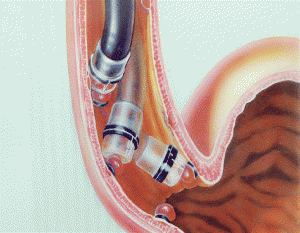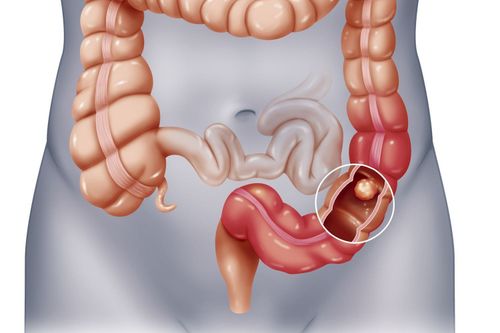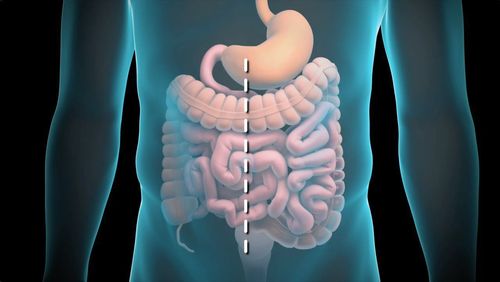This is an automatically translated article.
The article was consulted with an Anesthesiologist - General Surgery Department - Vinmec Nha Trang International General Hospital.Intussusception is a medical emergency that is common in children. In particular, the indication for intussusception surgery is a type of procedure commonly used to treat this condition if air intubation fails. How is the procedure performed and is the anesthesia used to remove the intussusception uncomfortable for children?
1. Learn about intussusception
Intussusception, a common occurrence in children, is the passage of an abnormal segment of intestine into the lumen of the next segment of intestine. The causes of intussusception often come from an imbalance between the size and pressure of the ileum and the ileocecal valve, or from mesenteric lymphadenitis, a respiratory infection that causes a lot of cough...Signs to recognize intussusception in children are:
Abdominal pain that comes on, in young children, these pains will cause intense crying attacks and often come on suddenly. Children twist their bodies and stop playing, stop breastfeeding... when in pain. In the early stages, children will vomit food. Later, the child may vomit green/yellow fluid...depending on the degree of intussusception; Along with that may be the condition that the child has blood in the stool. If parents find out early and take the baby to the hospital early, doctors can perform emergency surgery by removing the air cage. However, if the child arrives late to the hospital or the air intubation procedure is unsuccessful, depending on the baby's situation, the doctor may recommend surgery to remove the intussusception.

Tùy tình hình bác sĩ có thể chỉ định phẫu thuật tháo lồng ruột
2. What is intussusception surgery?
In most cases, doctors will try to remove blockages in the bowel by pumping air into the digestive tract. This is called air intubation. However, this solution is not always successful.At this point, intussusception surgery will be performed. Doctors will surgically remove or remove the intussusception, and then use antibiotics to treat the infection.
If doctors recommend surgery, parents should not reject the suggestion. It should be known that intussusception in children, if left untreated, will lead to necrosis of the intestine, causing septicemia, which is life-threatening for the baby.
3. Procedure for intussusception surgery
Surgical treatment has been applied since 1871 and has been proven to be effective in treating intussusception. To ensure safety and high efficiency, a standard procedure is required.Anesthesia: The anesthetic technique used for the intubation procedure is endotracheal anesthesia. Surgical route: laparoscopic or open surgery can be carried out. Remove the appendix if necessary and fixate the ileum to the cecum and the cecum to the right abdominal wall.
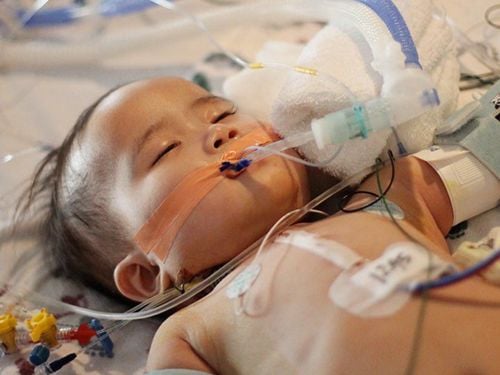
Áp dụng gây mê nội khí quản để tháo lồng ruột
If the intussusception is necrotic, the doctor needs to cut the bowel immediately or not depending on the condition of the abdomen and intestines. When the abdominal cavity is free of peritonitis and the bowel loops are functioning properly, an intestinal anastomosis should be performed immediately. In case of peritonitis, it is necessary to drain the two ends of the intestine to the outside.
4. How is the technique of endotracheal anesthesia before intubation performed?
Because the target audience is mostly children, it is difficult to cooperate during anesthesia before intubation surgery, so it needs to be done carefully with the consent of the family and the cooperation of the child (if possible). .Procedures for endotracheal anesthesia for children need to be conducted according to the following steps.
4.1. Preparation On the personnel side, the hospital needs to have enough doctors and nurses specializing in Anesthesia - Resuscitation, and trained in anesthesia and resuscitation in pediatric surgery.
On the patient side:
Need to be examined before anesthesia and surgery to prevent risks and complications during and after surgery. Patients need to be examined and persuaded to cooperate (if possible) with doctors and nurses during anesthesia. If necessary, the patient can be sedated and put to sleep before being taken to the operating room. 4.2. General Procedure In most cases, where the technique of endotracheal anesthesia is selected, several steps should be taken prior to induction of anesthesia, including:
Patient is supine and 100% oxygen is given for the duration of the procedure. about 3-5 minutes before induction of anesthesia. Install the machine and set up the transmission lines. If necessary, pre-anesthetic drugs can be used. Assess the risks of vomiting, regurgitation, laryngospasm, difficult intubation.
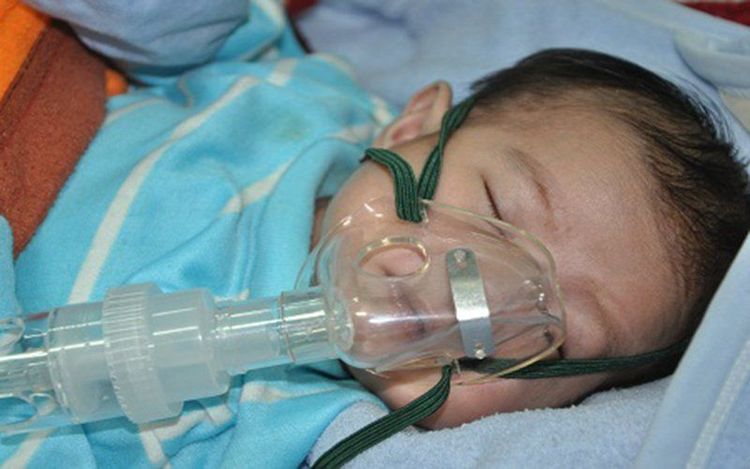
Cho bé thở Oxy trước khi khởi mê
Overall, intussusception surgery is a basic method of treating intussusception in children, and is often a last resort when previous treatments have not been effective. In particular, the process of endotracheal anesthesia before surgery must be carefully and fully conducted so that the patient can undergo the surgery in the most smooth and safest way.
Currently, the cause of intussusception in children has not been found, so there is no specific preventive measure. The best way is for parents to recognize abnormal signs in their children to detect intussusception early and avoid dangerous complications caused by the disease. Accordingly, when seeing a child showing signs of intermittent abdominal pain, manifested by sudden, intense crying, stretching, vomiting, refusing to suckle, twisting, stopping playing, etc., parents need to immediately Take the child to the doctor immediately. Doctors will examine and diagnose the child to confirm the diagnosis and take timely intervention measures for the child.
Please dial HOTLINE for more information or register for an appointment HERE. Download MyVinmec app to make appointments faster and to manage your bookings easily.




